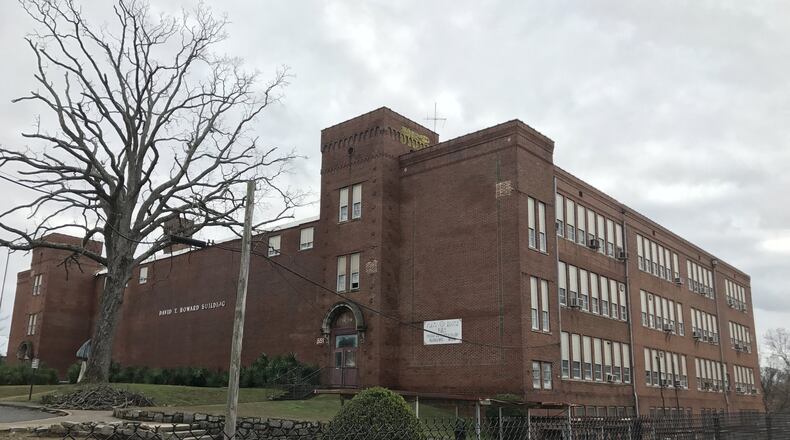Atlanta Public Schools is in the midst of a building surge.
The school board recently approved a bevy of renovation and construction projects to be paid for with money from a one-penny sales tax.
The district will spend about $39 million to renovate Beecher Hills Elementary School, Hollis Innovation Academy, Harper-Archer Elementary School and Gideons Elementary School. Work is underway to transform the site of the former Walden Middle School into an athletic complex for use by Grady High School teams. The board on June 4 approved a $27.6 million construction contract to build a new school to be called Tuskegee Airmen Global Academy.
And — in a project that has gathered buzz that matches its roughly $50 million price tag — APS will renovate and reopen Martin Luther King Jr.'s childhood school in the Old Fourth Ward. The shuttered David T. Howard Building will be turned into a middle school with a design that incorporates modern needs and historic preservation.
But even as the district hammers away at those projects it’s planning what comes next.
That conversation will delve into thorny issues such as gentrification, equity concerns and redistricting that resonate deeply in neighborhoods across the city.
APS enrollment cratered after topping 100,000 students in the 1960s, but it has begun to slowly climb in recent years. Last fall, APS counted 52,147 students.
The district is paying particular attention to a growth spurt in the Grady cluster, where officials say schools are already bursting at the seams.
To address the problem, students who currently attend Inman Middle School will move into the updated Howard building, which the district estimates will accommodate several hundred more students. The school board in April approved a two-year lease to rent an annex site for kindergarten classes at Morningside Elementary School; the district will shell out $14,705 a month in rent the first year, 3 percent more the second year, and spend an estimated $565,000 to renovate the space.
Officials believe millennials and their young families will continue to flock to inner-city living and the Beltline’s walkable allure.
The district is awaiting the results of the 2020 census to provide more data, but population estimates say Atlanta is poised to grow. The debate is over how much. The city’s current population is under a half-million people. Estimates of how many residents could live in the city by 2040 vary widely — from 560,000 people to 1.2 million.
“What it means for us as a district is that more than likely we’ll have far more kids, and we are going to need a lot more schools,” Larry Hoskins, who supervises the district’s operations, told board members at a recent planning retreat.
During the school year that just ended, APS had 144 properties (that’s a whopping 1,638 acres), including 74 active school sites, 17 vacant buildings and 19 sites categorized as “unimproved land.”
Those who followed the testy relationship between the school district and former Mayor Kasim Reed know that school leaders battled for years to gain control of deeds to school properties so the district could do as it pleased with its holdings. Under a new mayoral administration, the city of Atlanta has turned over dozens of deeds to the school district, with more on the way.
Now, APS must decide which properties it should hang onto for future school sites and which it should sell.
Superintendent Meria Carstarphen said she’s hesitant to sell off in-demand sites the district may later need.
“… [I]f the projections are let’s say 50 percent true, it’s still a lot of growth, and there’s an emerging generation that will be having children. And they want to live, work, play, eat, go to the doctor without getting in their cars,” she said.
About the Author
Keep Reading
The Latest
Featured


